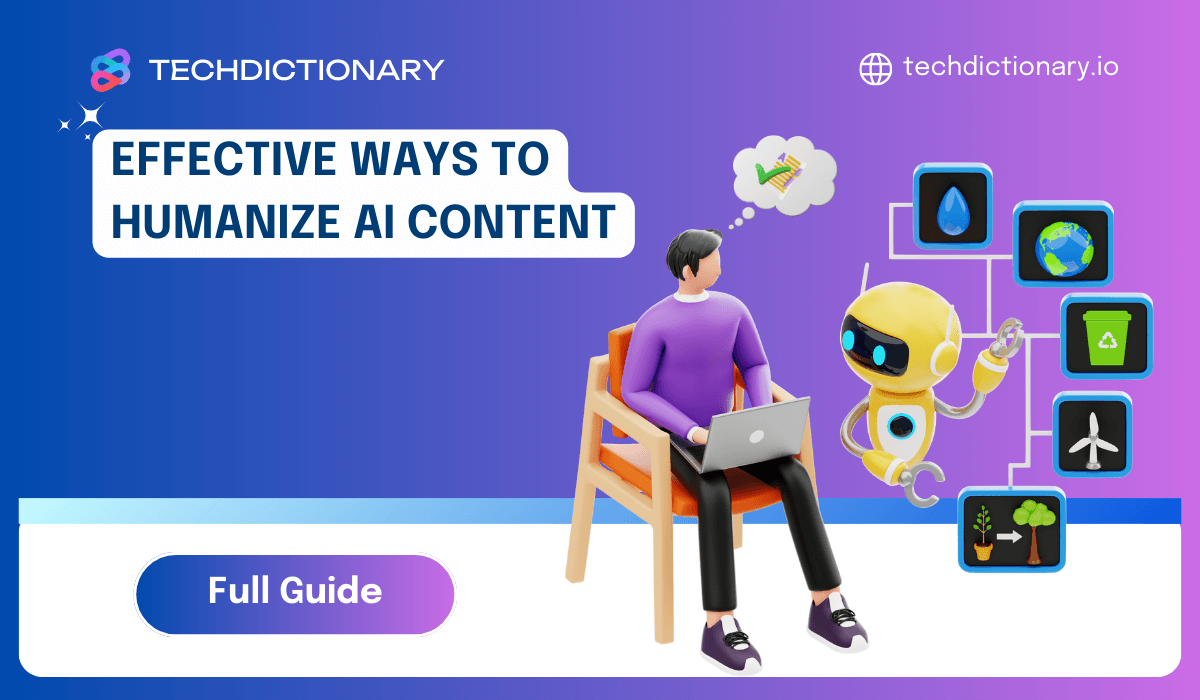
There is no doubt that with speed and convenience, AI content is already used by businesses that have lost business. However, despite its efficiency, AI-generated content often lacks the personal touch that human writers offer, which is crucial for engaging readers.
At TechDictionary, we explore various aspects of AI and its applications. Today, we will discuss how to humanize AI content based on our experience and knowledge. This guide will help you understand the significant differences between AI and human writing and provide practical tips to make AI content more authentically with human emotions.
Human writing is a product of human thought, experience, and creativity. It’s full of character and voice and reflects the unique perspective of the author. AI writing, on the other hand, is generated by algorithms that are trained on massive databases.
While AI can produce grammatically correct and informative content, it often lacks the depth, nuance, and creativity of human writing.
There are several reasons why you should humanize AI content.
First, humanized content is more interesting and easier to read for users. People are naturally interested in material that is personal, relates to them, and makes them feel something.
Second, humanized content is more likely to be trusted by users. Content made by AI can sometimes seem cold and lifeless. Adding a human touch can help people believe you and see you as a good source of information.

E-A-T checklist
Third, content that sounds more like a person is more likely to have high rank in SERPs. Google’s E-E-A-T like material that is informative, interesting, and of high quality. Search engines will be more likely to notice your AI content if you make it more human.
Fourth, follow academic integrity. If you are caught using AI in school, you could get bad results, have ethical problems, or even be in trouble with the law.
Identifying which AI-generated content needs humanization depends largely on the text’s purpose and target audience. Content that requires a personal touch includes articles meant to persuade or engage emotionally, such as blog posts, opinion pieces, and feature articles. A good rule of thumb is to review if the content:
Using these criteria to judge material can help you figure out how much human intervention is needed. Or you can use AI detector tools to see if humanize is needed.
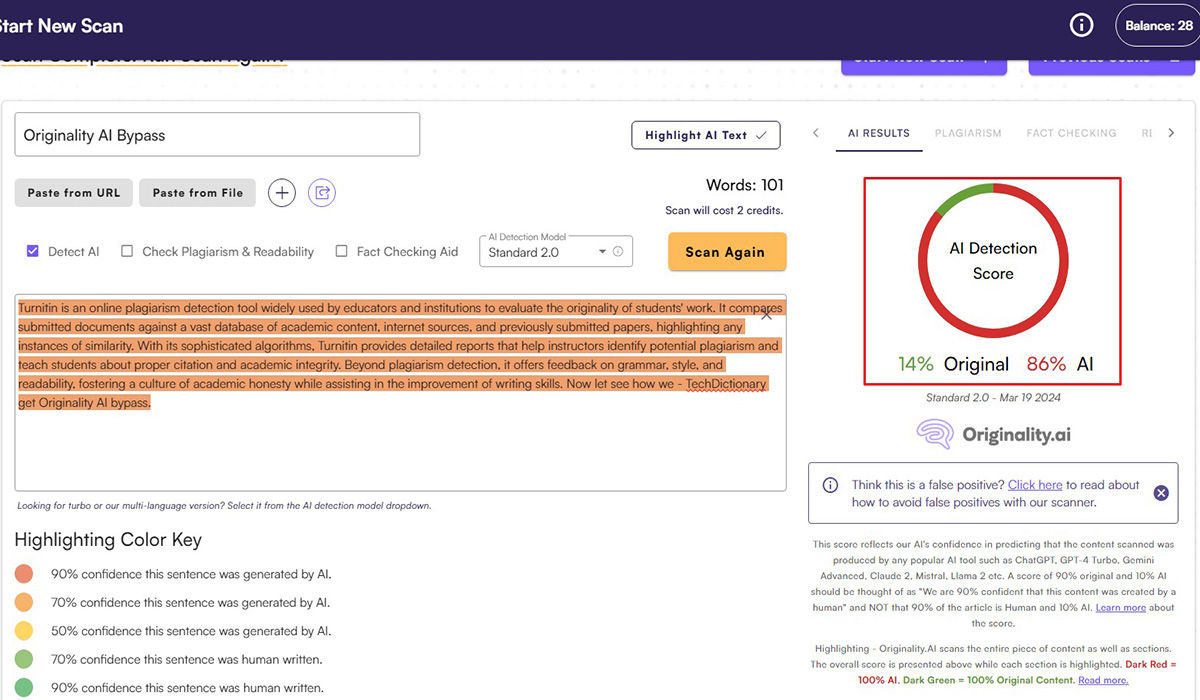
Originality AI detection
Drawing from our experience, most of the content generated by GPT-4 or Gemini needs humanization, as their AI scores exceed 80%.
When using AI tools, make sure that the prompts you use match the tone and style you want to achieve. When you use personalized prompts, the results need less editing and seem more human from the start.
The more specific and detailed your prompts are, the better the result you will get.
If you want prompts for website blogs, leave a comment with your email so we can send them to you. It’s totally free, for sure.
Adding personal experiences to generic AI information can make it more interesting and relatable. By talking about your experiences related to the subject, you can make the content appear more real and trustworthy.
This also ensures you meet Google’s algorithms E-E-A-T can have change to get a higher rank.
Example:
AI-Generated Text: “Regular exercise is essential for maintaining good health.”
Humanized Text: “It was hard for me to keep up with my workouts. That is until I started using a fitness tracker. It changed everything! Every day, seeing how many steps I’ve taken and how many activities I’ve planned drives me to do more. Now, I look forward to going for walks and working out every day.”
Emotional language helps people show how they feel and can set the right tone for the material. Use verbs and words that show how you want your readers to feel. This will make your writing more appealing to them as a person.
Example:
For instance, we review AI tools. So, instead of just listing features, we also mention how we think and feel when using them:
AI text: “Its AI detection has high accuracy.”
We edit: “We are all shocked by the accuracy of its AI detection.”
First-person pronouns like “I,” “we,” and “my” can make the writing sound less formal and more personal. This method works especially well in opinion pieces and blogs where a personal link is important.
Example:
AI-Generated Text: “There are ways to save money while traveling.”
Humanized Text: “I’ve learned that you can save a lot of money by planning your trip ahead of time and booking your flights and lodging during off-peak seasons. Spending little money while discovering a new city can also be done by joining free walking tours and visiting nearby sights.”
Like personal experiences, real-life examples help put abstract ideas in context, making them easier to understand and more approachable. They also clarify points and can make the content seem more trustworthy.
Example:
AI-Generated Text: “Breakfast is an important meal.”
Humanized Text: “A new study in the Journal of Nutrition found that people who ate oatmeal with berries and nuts for breakfast did better on memory tests than people who didn’t eat breakfast.”
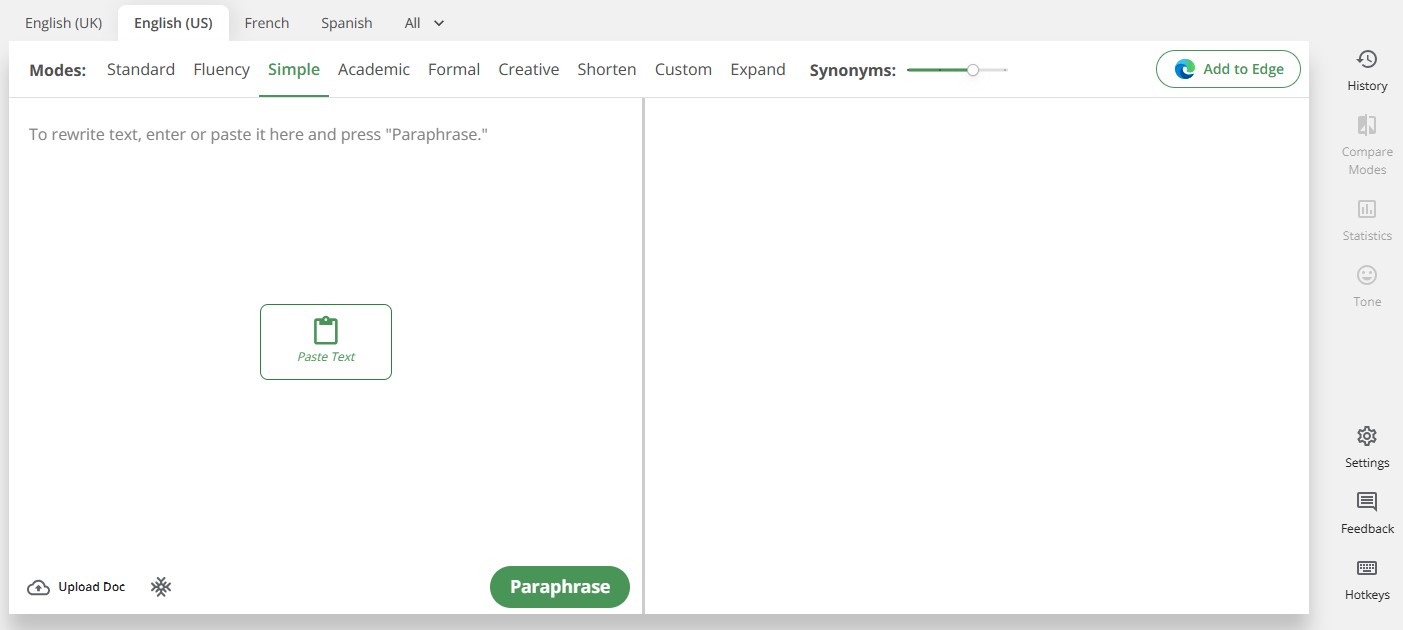
Choose the Right AI Writing Tool
There are many AI writing tools out there, but not all of them will work for you. Each targets a different audience and has different USPs.
For example, QuillBot and Grammarly are AI writing tools. Although the two tools have similar features, each has a different target audience and key features.
Selecting the appropriate AI tool is crucial. Consider the following when choosing:
AI content tends to focus on using the same words repeatedly, which can make it seem dull. Find words that are used too often and change them to similar ones, or rewrite the lines to make them more interesting and varied.
Here’s a short list of words and phrases that AI tools love to use, which you should watch out for:
“In today’s world, Unlock, unleash, unveil, unravel, Critical, crucial, it’s important to, Delve into, embark on a journey, pave the way, ultimately, Furthermore, moreover, additionally, Bustling, vibrant, hustle and bustle”
Example:
AI content: “Our company provides excellent customer service”.
Human edit: “Our dedicated customer service team is passionate about resolving your inquiries quickly and efficiently, ensuring a positive experience for every interaction.”
Some tools are specifically designed to improve the quality of AI-generated content, making it more human-like. Utilizing these tools can make humanizing the content much easier, especially when editing for readability and emotional impact. This can help ensure your content does not appear spammy to search engines like Google.
Some AI humanizers, we already tested and reviewed, are quite good, such as StealthWriter, Undetectable AI,…
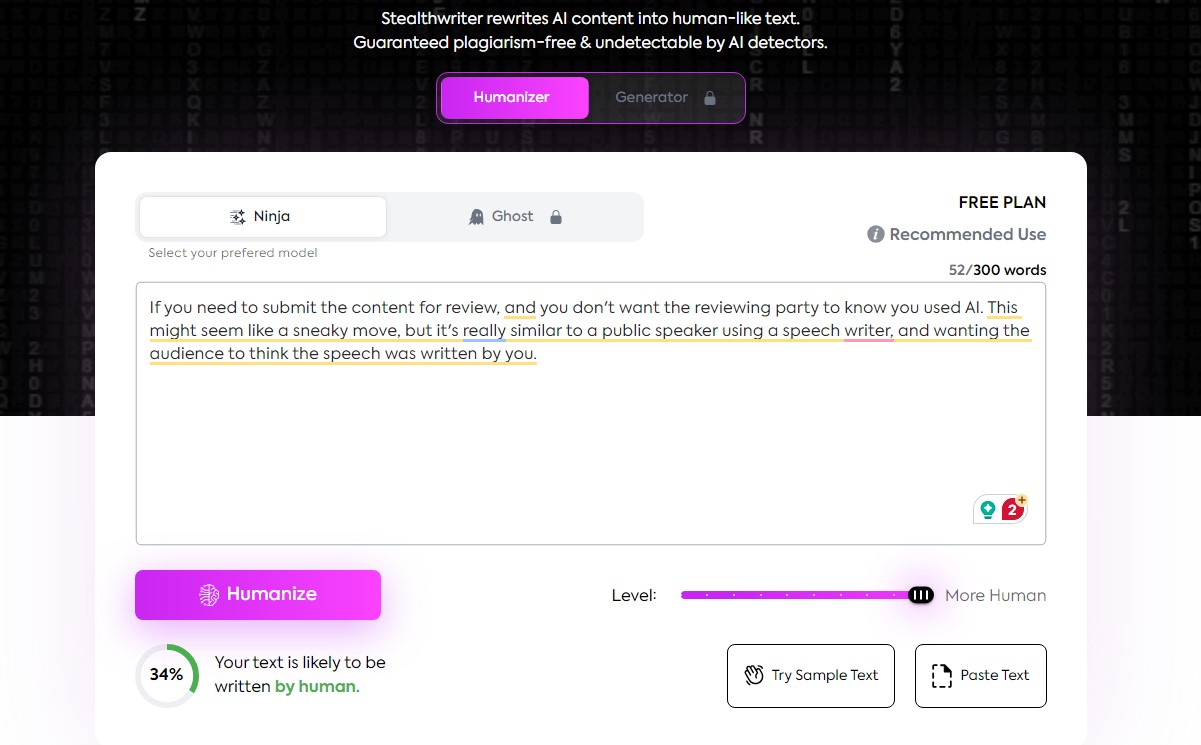
Use an AI Humanizer
AI humanizer tools are specifically designed to improve the readability and flow of AI-generated content. Here’s how they can help:
Example:
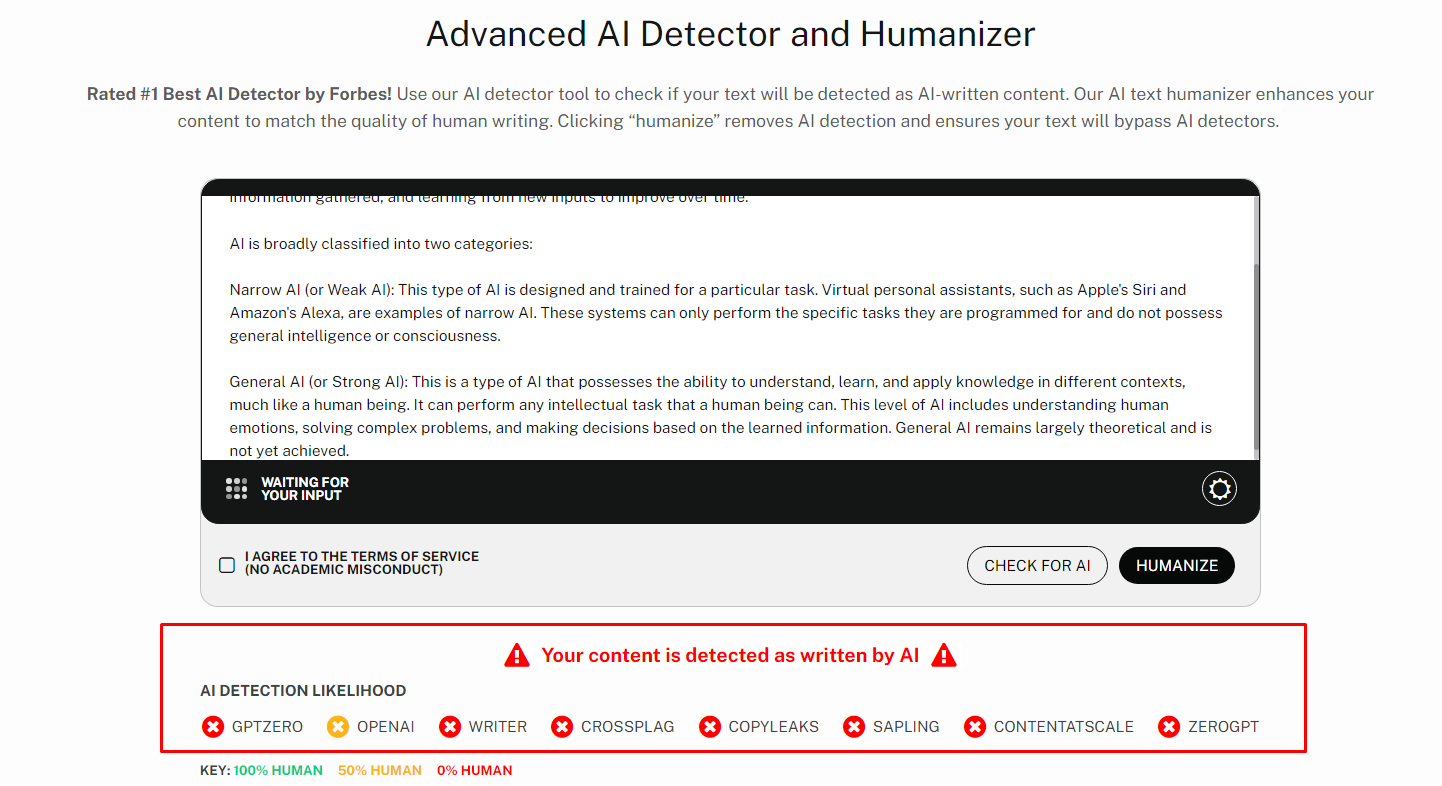
Before using the Humanizer Feature
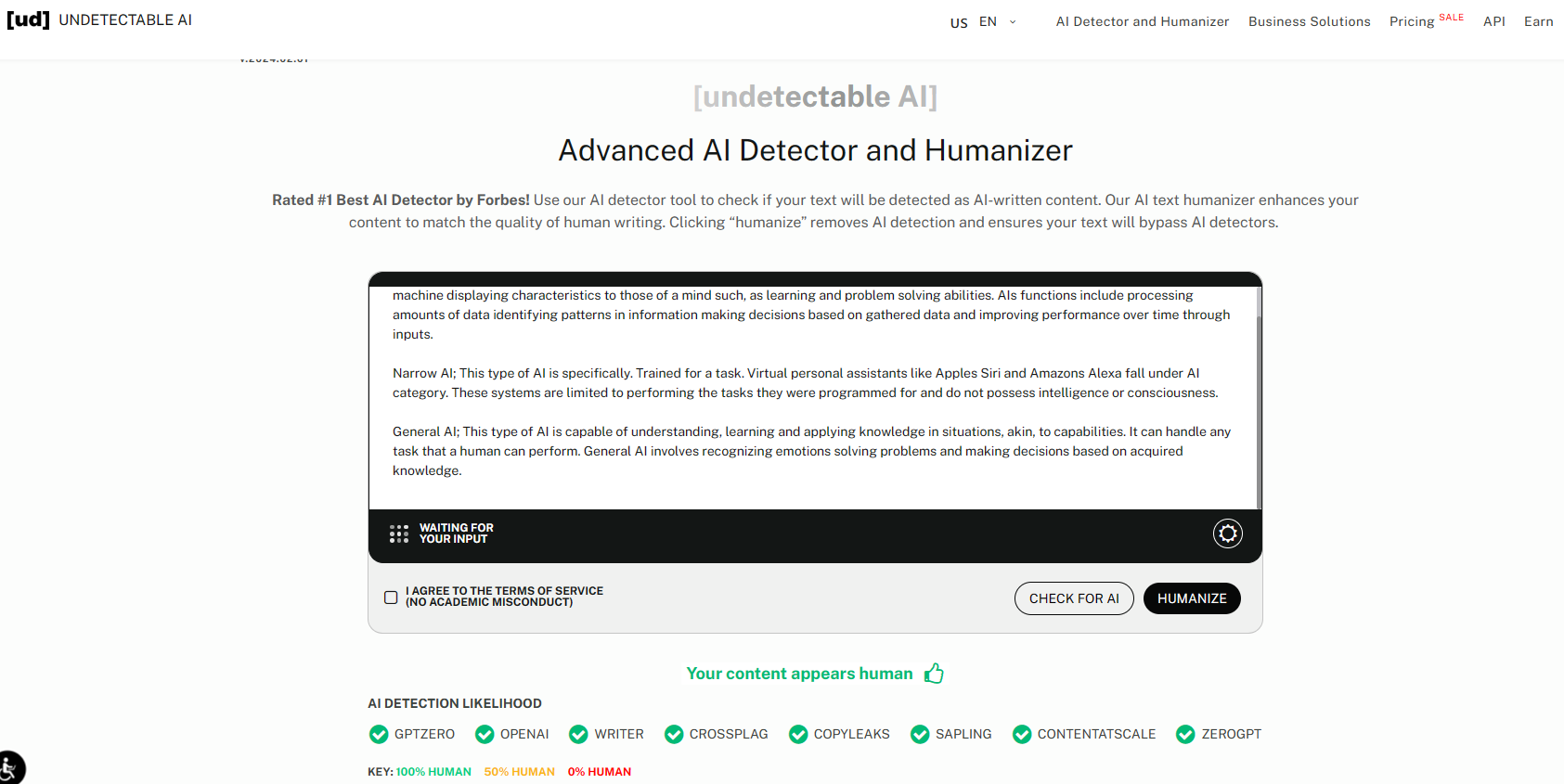
After using the Humanizer Feature of Undetectable AI
If you want to learn more about humanized AI, we have the “5 Best AI Humanizers That Humanizing AI Text in 2025” article. Read to explore more useful tools for yourself!
Keep in mind that AI can make mistakes. Always review AI-generated content for factual accuracy and coherence. Editing not only corrects errors but also refines the voice and style to suit human readers.
Related Articles: AI Accountability: Who Is Responsible For AI Mistakes?
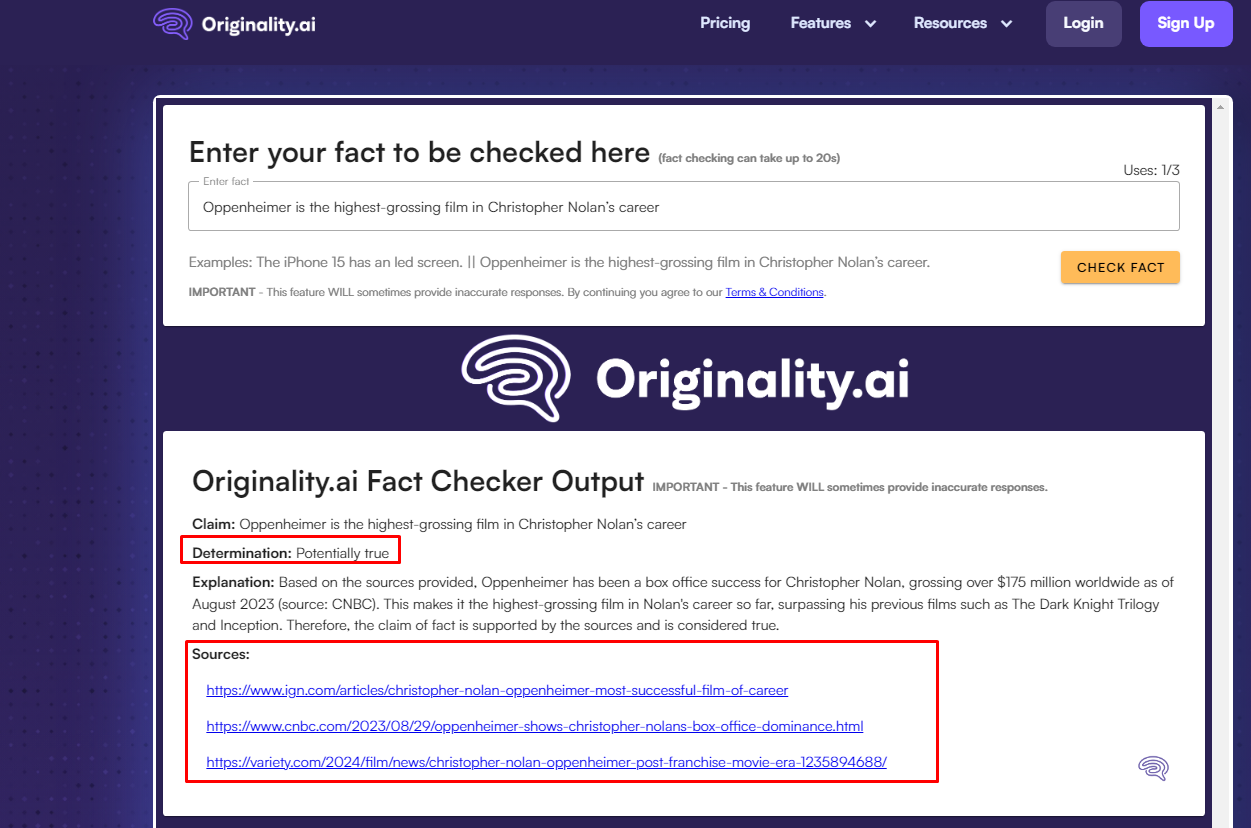
Fact-Checker Of Originality
AI checkers can help identify areas in the text that seem unnatural or too robotic. These tools are invaluable in ensuring content quality and user engagement.
By following these expanded tips, you can effectively leverage AI content creation tools while ensuring your content remains unique, engaging, and informative. Remember, AI should be a tool to empower your content creation, not replace the human touch that truly resonates with your audience.
To make content with AI, you must find a mix between using computers to their full potential and letting humans use their imaginations. Always check the product for any unethical issues like biases or false information, and be honest with your audience about how you use AI to make content.
“How to humanize AI content” is an important question for anyone who is considering using AI content creation tools. By applying these 10 tips, you can ensure that your AI-generated content resonates with human warmth and authenticity.
Remember, the main goal in learning how to humanize AI content at TechDictionary is to add the complex knowledge of human writers to AI’s analytical power. If you follow these tips, the quality of your writing will reach new high levels.

